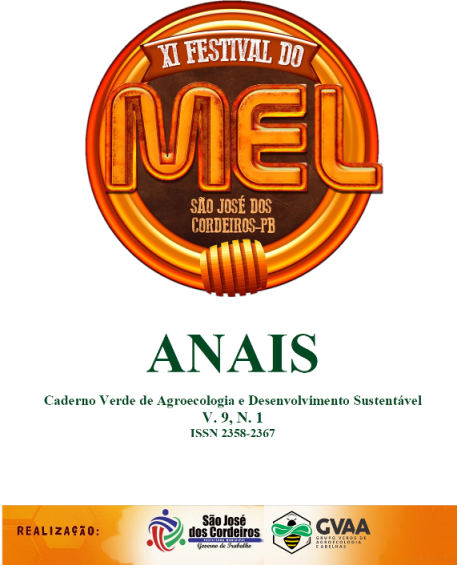HYGIENIC BEHAVIOR OF Apis mellifera L. BEES IN THE TOWN OF GARANHUNS, PERNAMBUCO, BRAZIL
Keywords:
Beekeeping, Africanized bees, Sanity.Abstract
It’s from great value and interest of beekeepers the search for colonies with desirable characteristics, especially those ones that increase their productivity, whatever it’s honey or any other bee product. It’s through genetical enhancement programs that this practice is reached, and when it comes to bees, an efficient way of selection is done through the hygienic behavior. Facing it, this work had the goal to evaluate the hygienic behavior of africanized bees (Apis mellifera L.) colonies installed in apiary in the town of Garanhuns, Pernambuco. The experiment was performed in the Experimental Farm from Universidade Federal Rural de Pernambuco – Unidade Acadêmica de Garanhuns, in the month of June, 2019. A total of 25% of the Apis mellifera L. colonies from the apiary were selected randomly, having so registered their hygienic behavior. The hygienic behavior was determined by the pups drilling method. With the help of an entomological pin, an area with 100 operculated cells were drilled. The entomological pin was inserted in the operculums center, in a depth that allowed reaching the pup. After 24 and 48 hours were proceeded the survey and counting of the pups that had been removed, and so was figured out the cleaning percentage of each colony. The results showed that after 24 hours, great part of the pups had been removed, average of 78,6%, after 48 hours the percentage of removed pups reached 91,4%. Colonies considered hygienic must show a removal percentage over 80% in the first 24 hours.The value obtained in the experiment below 80% in the first inspection is thanks to two colonies that showed low removal level (58% and 75%). One of the investigated colonies showed almost 100% hygienic behavior, demonstrating to exist genetical variability among the colonies. It’s concluded that honey bees colonies show different cleaning levels.Downloads
Published
How to Cite
Issue
Section
License
Termo de cessão de direitos autorias
Esta é uma revista de acesso livre, em que, utiliza o termo de cessão seguindo a lei nº 9.610/1998, que altera, atualiza e consolida a legislação sobre direitos autorais no Brasil.
O(s) autor(es) doravante designado(s) CEDENTE, por meio desta, publica a OBRA no Caderno Verde de Agroecologia e Desenvolvimento Sustentável, representada pelo Grupo Verde de Agroecologia e Abelhas (GVAA), estabelecida na Rua Vicente Alves da Silva, 101, Bairro Petrópolis, Cidade de Pombal, Paraíba, Brasil. Caixa Postal 54 CEP 58840-000 doravante designada CESSIONÁRIA, nas condições descritas a seguir:
O CEDENTE declara que é (são) autor(es) e titular(es) da propriedade dos direitos autorais da OBRA submetida.
O CEDENTE declara que a OBRA não infringe direitos autorais e/ou outros direitos de propriedade de terceiros, que a divulgação de imagens (caso as mesmas existam) foi autorizada e que assume integral responsabilidade moral e/ou patrimonial, pelo seu conteúdo, perante terceiros.
O CEDENTE mantêm os direitos autorais e concedem à revista o direito de divulgação da OBRA, com o trabalho simultaneamente licenciado sob a Licença Creative Commons do tipo atribuição CC-BY.
O CEDENTE têm autorização para distribuição não-exclusiva da versão do trabalho publicada nesta revista.
O CEDENTE têm permissão e são estimulados a publicar e distribuir seu trabalho online (ex.: em repositórios institucionais ou na sua página pessoal) a qualquer ponto antes ou durante o processo editorial, já que isso pode gerar alterações produtivas, bem como aumentar o impacto e a citação do trabalho publicado.








